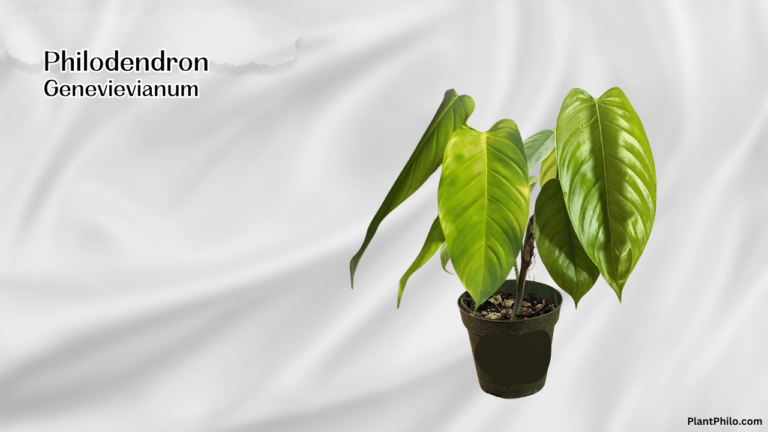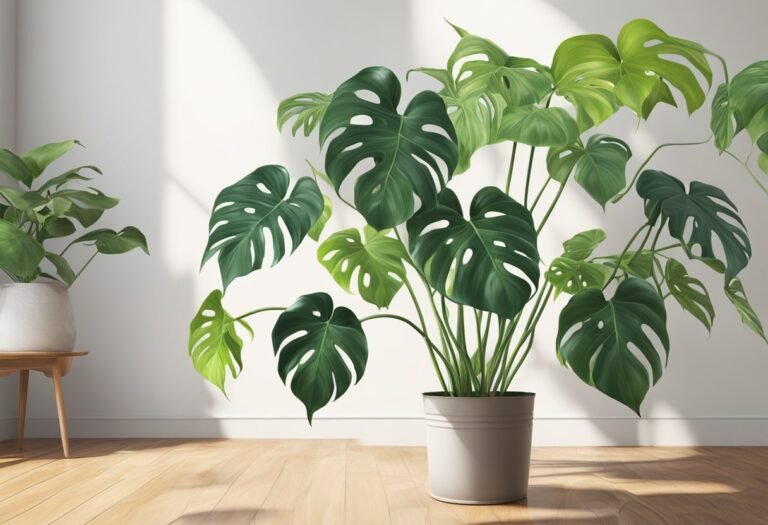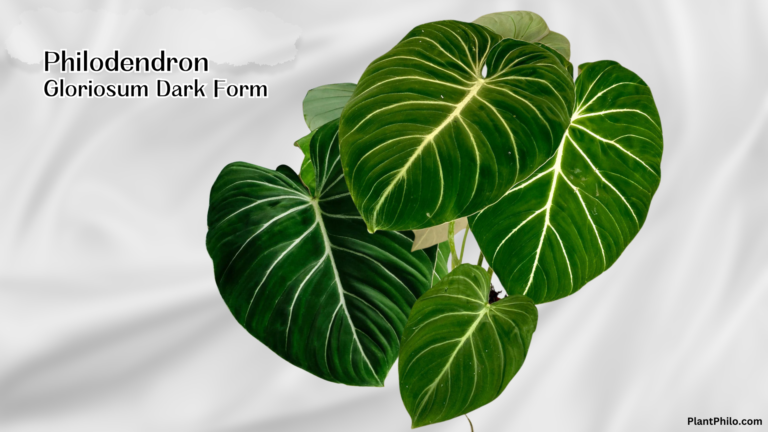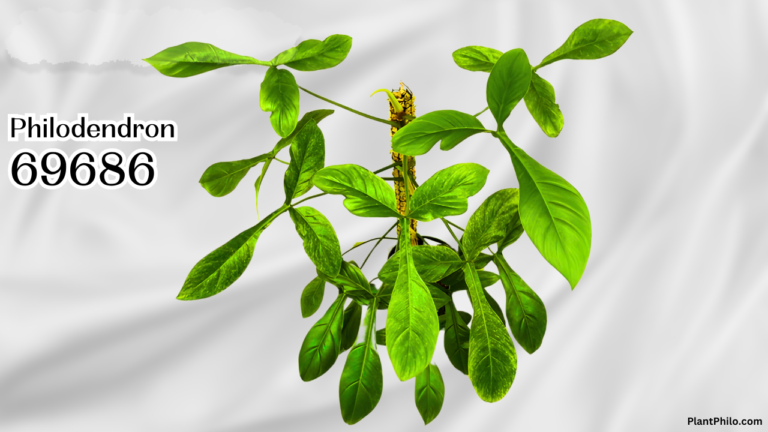Cordatum: Essential Care Tips and Growth Guide
Philodendron cordatum is a beautiful, easy-care houseplant with heart-shaped, emerald green leaves that add a touch of nature to any space.
This plant thrives in medium to bright, indirect light, making it a great choice for homes and offices.
Its trailing vines look great in hanging planters or cascading from a shelf.
It is simple to maintain.

Philodendron cordatum is sometimes mistaken for pothos, but its solid green leaves set it apart from more common variegated types.
Even though this species is not as common as some other houseplants, it is well-loved for its charming look and ease of care.
You can read more about this interesting plant and its care needs on this guide to Philodendron cordatum.
Cordatum Overview

Cordatum is a term used for several plants, but it most often refers to Philodendron cordatum.
This plant is known for its unique heart-shaped leaves and its use as a decorative houseplant.
My focus is on its botanical background, the most common types people grow, and the key traits that make it stand out.
Botanical Classification
Philodendron cordatum belongs to the Araceae family.
Its scientific name is Philodendron cordatum, which highlights the Latin word “cordatum” that means heart-shaped, a nod to its leaf form.
This species is native to a small region in Southeastern Brazil, near major cities like Rio de Janeiro and São Paulo.
It thrives in tropical rainforests as an epiphyte, which means it often grows on other plants or rocks instead of in soil.
This growth habit helps it get more light and air in dense forests.
Philodendron cordatum is sometimes confused with other heartleaf philodendrons, but it has its own classification and characteristics.
The species is toxic if ingested, which is important for me to keep in mind around pets and children.
Common Varieties
When I talk about cordatum as a houseplant, the type most people recognize is Philodendron cordatum.
There are other plants with similar heart-shaped leaves, such as Philodendron hederaceum, often labeled as the “heartleaf philodendron.”
These are sometimes sold under the same names in stores, which can be confusing.
There are significant differences between species, especially in their growth rates, leaf thickness, and tolerance for low light.
Some nurseries offer different “cordatum” varieties, such as those with slightly different shades of green or leaf shapes.
For instance, the popular emerald green Philodendron cordatum is selected for its deep green foliage.
Below is a simple table to compare a few varieties:
| Name | Leaf Shape | Color | Light Needs |
|---|---|---|---|
| Philodendron cordatum | Heart | Green | Medium-Bright |
| Philodendron hederaceum | Heart | Bright Green | Low to Medium |
| Philodendron cordatum ‘Lime’ | Heart | Lime Green | Medium-Bright |
Distinguishing Features
What makes Philodendron cordatum easy to recognize is its classic heart-shaped leaves.
The leaves are usually emerald green and can be shiny or semi-glossy.
The leaves grow along slender, trailing stems.
This plant is very adaptable and can thrive in a range of indoor light conditions, from low to bright indirect light.
It doesn’t require frequent watering, making it low-maintenance.
It grows best when its soil is kept lightly moist, but not soggy.
Philodendron cordatum is toxic if ingested, so handling with care is important.
Its climbing or cascading habit lets me grow it in hanging baskets, pots, or even train it up a support pole.
Its resilience and attractive leaves make it especially popular with beginner plant owners.
Cultivation and Care

When I grow Cordatum, I focus on light, water, soil, and how I can create new plants.
Attention to these details helps the plant stay healthy and grow well indoors.
Ideal Growing Conditions
I place my Cordatum where it can get plenty of bright, indirect sunlight.
Too much direct sun can burn the leaves, while too little light can slow down its growth.
For homes with less sunlight, I still find that the plant adapts to low or medium light, although its leaves may look less vibrant.
If I want my Cordatum to thrive, I keep the temperature between 65°F and 80°F.
I avoid cold drafts or sudden temperature changes, as these can cause stress.
I also use a humidity tray or a small humidifier during the winter months, since the plant does better with moderate to high humidity.
This way, it looks its best year-round.
For further tips, I often check resources like LiveTrends Design Group for helpful guidance.
Watering and Soil Requirements
I water my Cordatum only when the top inch of soil feels dry to the touch.
If I water too often, I risk root rot.
On average, I need to water every 7 to 10 days, but this can vary depending on the season and indoor conditions.
For soil, I use a well-draining potting mix.
The mix should hold enough moisture but never stay soggy.
Sometimes, I add perlite or orchid bark to the soil to increase drainage.
I also prefer to use filtered or distilled water, or let tap water sit out for 24 hours to let any chlorine evaporate.
Details on watering and soil can be found at Lively Root.
Key Soil Features:
| Requirement | Description |
|---|---|
| Drainage | Well-draining |
| Texture | Loose, airy |
| Water Preference | Slightly moist, not wet |
Propagation Methods
I’ve found that propagating Cordatum is simple and effective.
I use stem cuttings for this process.
First, I select a healthy vine and cut just below a node (where the leaf joins the stem).
I make sure the cutting has at least one or two leaves attached.
Next, I place the cutting in a glass of water, making sure the node is submerged.
After a few weeks, small roots usually start to form.
When the roots are about one inch long, I move the cutting to fresh potting soil.
Alternatively, I can plant the cuttings directly in moist soil, but I make sure the soil stays damp while the roots develop.
For even more detailed steps, I sometimes refer to online care guides such as Greenery Unlimited.
This method allows me to expand my collection or share healthy plants with friends.
Uses and Applications
Cordatum is valued for both its decorative appeal and contributions to well-being.
Its uses can be grouped mainly into ornamental displays and health-linked or environmental roles.
Ornamental Purposes
I often recommend Cordatum, especially Philodendron cordatum, as a versatile houseplant.
Its heart-shaped green leaves and trailing vines bring a lively touch to homes and offices.
By placing it in hanging baskets or letting it climb a support, I can create a striking visual effect that fits many interior styles.
Because it is easy to care for and adapts to low light conditions, it’s also great for beginners.
Owners often pick this plant to brighten up workspaces or living rooms.
People like that its glossy leaves maintain their color and texture throughout the year.
Here’s a brief overview of its decorative benefits:
| Feature | Description |
|---|---|
| Leaf Shape | Heart-shaped, glossy |
| Ideal Display | Hanging baskets, shelves, trellises |
| Light Requirements | Low to medium |
| Maintenance Level | Low, beginner-friendly |
For visual interest, I combine Cordatum with other tropical plants, which enhances the look of my indoor garden.
Its tropical appearance helps create a calm atmosphere, making it a favorite for many plant lovers who want a lush environment at home.
Learn more at Philodendron cordatum’s ornamental uses.
Health and Environmental Benefits
If I focus on Syzygium cordatum, it has long been used in ethnomedicine.
The leaves, bark, roots, and fruits have been reported as treatments for many conditions, including gastrointestinal issues, wounds, fever, and respiratory complaints.
It plays a role in traditional remedies across East and Southern Africa, where the plant is an important part of local health practices.
The plant is used in remedies for at least 24 different health problems.
According to research, it can help with burns, coughs, and even some infectious diseases.
People value it for its natural compounds, although more scientific studies are needed to confirm how these benefits work.
Besides health uses, Cordatum as a houseplant helps improve air quality indoors.
Like many broad-leaf tropical plants, it absorbs certain pollutants and increases humidity, making my living space fresher.
An overview of medicinal and environmental applications can be found at Syzygium cordatum’s health and ethnomedicinal uses.
Frequently Asked Questions
I pay close attention to the specific needs of Philodendron Cordatum to keep it growing well.
I consider light, water, soil, and unique traits to help my plant thrive.
What are the optimal lighting conditions for Philodendron Cordatum?
I place my Philodendron Cordatum in bright, indirect sunlight.
Direct sun can burn the leaves, but too little light slows growth.
Near a north or east-facing window works well.
How should I care for a Philodendron Cordatum to ensure healthy growth?
I keep the temperature between 65°F and 80°F and avoid cold drafts.
I check leaves for pests and yellowing.
When the plant gets large, I trim the stems to encourage bushier growth.
I clean the leaves with a damp cloth to keep them healthy.
What distinguishes the Philodendron Cordatum Brasil from other varieties?
Philodendron Cordatum Brasil has bright green leaves with yellow or lime-green stripes down the center.
The regular Cordatum’s leaves are solid green and heart-shaped.
The variegation makes Brasil easy to tell apart from other Cordatum types.
How frequently should watering be carried out for Philodendron Cordatum plants?
I water when the top inch of soil feels dry to the touch.
Overwatering causes root rot, so I let the soil dry before adding more water.
Using a moisture meter or a wooden dowel can help me avoid overwatering.
More details are on the Greenery Unlimited care guide.
Which soil composition is best suited for Philodendron Cordatum?
I use well-draining soil that holds moisture but does not stay soggy.
A mix of potting soil, perlite, and peat moss is effective.
I make sure my pot has drainage holes so excess water does not pool at the bottom.
What are the proper steps for propagating Philodendron Cordatum?
I cut a healthy stem just below a node, making sure there’s at least one leaf on the cutting.
Then, I place the cutting in water or moist soil until roots appear.
Once roots grow to about two inches long, I move the cutting to its own pot with fresh soil.
For detailed propagation steps, I refer to this complete care guide.




